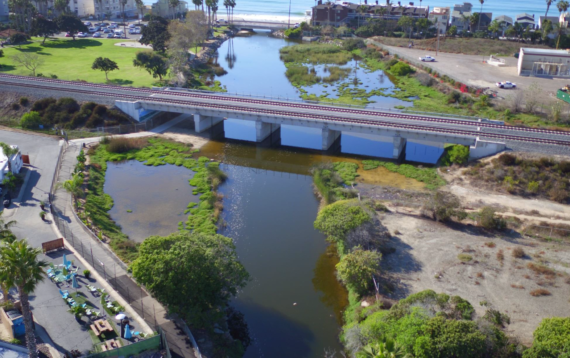Location: San Diego County
Project Type: Restoration Implementation
Status: Current
Cost: $2,500,000
Funding Gap: $2,000,000
Area Affected: 6.8 acres
Assembly District: 76
Senate District: 36
Congressional District: 49
Project Lead/Grantee:
City of Oceanside – Water Utilities Department, Justin Gamble (jgamble@oceansideca.org)
 For more information, visit scwrp.org
For more information, visit scwrp.org
Loma Alta Slough is a small creek mouth estuary in the City of Oceanside, the third largest coastal City in San Diego County. Intermittently tidal estuaries such as the Loma Alta Slough provide unique habitats for coastally-dependent species, such as the endangered tidewater goby, but the estuary must be in healthy condition to maintain these important functions. Loma Alta Slough was once a much larger estuary, over 40 acres in size. Since the 1960’s, watershed urbanization, channelization of the creek and wetland fill has degraded water quality and reduced habitat potential at the Slough.
Phase 2 of the Loma Alta Slough Wetland Enhancement Project involves construction of restored brackish wetlands, transitional ecotones and upland habitat, including hydraulic improvements to existing wetlands. This phase also includes construction of a new public trail system north of the restored wetlands for outdoor recreation and connectivity between the beach and Coast Highway commercial corridor. The project will restore the historic conditions and ecological functions of the Slough in order to improve water quality, increase wetland coverage, restore habitat for native species and offer new recreational opportunities. The project area is approximately 5.8 acres of City-owned property. The Project construction involves excavation of infill on vacant lands along the northside of the Slough, including grading a new marsh plain with several tidal channels and elevated berms. These areas will be planted and maintained with a palette specific to each habitat elevation, creating coastal salt marsh, riparian and upland habitat zones.

